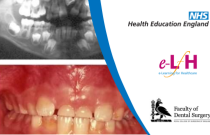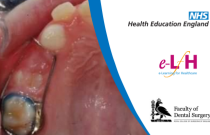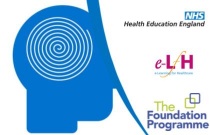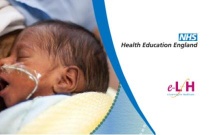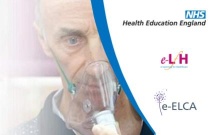Abnormal dental development in the mixed dentition
Toby Gillgrass
This session will discuss how to identify retained infra-occluded ankylosed, primary teeth, dilacerated and supernumerary teeth.
Which local anaesthetics should I use?
Zoe Greenwood
This session provides an overview of the local anaesthetic agents available for use in dentistry, including properties, indications for use and maximum doses.
Management Strategies for Eating Disorders
Dasha Nicholls and Tony Jaffa
This session will cover the principles of treating an adolescent with an eating disorder, including some of the physical and legal considerations.
Delirium (Acute Confusional States): Recognition and Causes
Ray Vieweg
In this session delirium (the acute confusional state) is discussed in order that foundation doctors can recognise, assess and manage this condition in various clinical settings. UKFP Curriculum 2021 This elearning session covers some of the behaviours in: FPC1: Clinical assessment: assess patient needs in a variety of....
How to Take a History Sudden Vision Loss
Rosemary Robinson and Ahmad Muneer Otri
This session is designed to help you take a structured history in patients with painless sudden loss of vision. From this history you should be able to formulate a differential diagnosis even before you proceed to examine the eye.
Overview of Occupational Therapy in Neonatal Services
Deanna Gibbs, Amanda Clifford and Sally Payne
This session is for occupational therapists new to their role in neonatal care and those interested in this specialist area of practice. It will provide an overview of the role of occupational therapy in meeting the occupational needs of babies receiving neonatal care and their families. The session will enable you to consid....
Drug Management of Breathlessness (Including Oxygen)
Tim Peel
This session reviews the use of drugs and oxygen within an integrated approach to the management of breathlessness in the patient approaching the end of life. This session was reviewed by Natasha Lovell and Sarah Hanrott and last updated in April 2024.
Ethics for Social Workers
Industry Specialist
2.00 Hours
Social workers and other behavioral health professionals are expected to protect the well-being of their clients and adhere to the values, ethical principles, and standards of the profession. The purpose of this course is to provide an overview of issues that social workers may face in the areas of competence, social diversity,....
Compassion Fatigue in Homeless Health Care
Industry Specialist
1.00 Hours
This CE course provides health care workers with information on compassion fatigue, focusing on the following topics: understanding stress; extinguishing job burnout; respect, support, and recognition from management; vicarious trauma warning signs; views of the work environment; creative strategies to improve the work environme....
Patterns of Care for Rural and Urban Children with Mental Health Problems
Nathaniel J. Anderson MPH, Samantha J. Neuwirth MD, Jennifer D. Lenardson MHS, and David Hartley PhD
1.00 Hours
This CE course examines if patterns of children’s mental health diagnosis and service use, such as office visits and psychotropic medications, differ by rural-urban residence, and the effects of income and insurance type on use of mental health services.
Ethics, Confidentiality and Boundary Issues in Professional Counseling (UPDATED)
American Counseling Association, Ethics Revision Task Force overseen by Marcheta Evans, Ph.D.
2.00 Hours
This CE course describes the ethical behavior and responsibility to which counselors aspire by covering the following themes: the counseling relationship; confidentiality and privacy; professional responsibility; relationships with other professionals; evaluation, assessment, and interpretation; supervision, training, and teachi....
How to check the arterial pulse
Christopher Nicholson
This module aims to help healthcare professionals to check the arterial pulse. It focuses on the radial pulse, and also briefly considers the brachial and carotid pulses. The arterial pulse provides information about the patient’s condition and is therefore a vital sign. Checking the pulse is an essential clinical skill for heal....
How to insert a peripheral cannula
Sally Jane Shaw
This How to module aims to assist healthcare practitioners to undertake the safe and effective insertion of a peripheral cannula. It provides information on best practice related to peripheral cannulation with an open-ported safety cannula. The same principles for practice apply to non-ported open safety cannulae. Peripheral....
How to introduce yourself to patients
Mags Guest
This article explores the process of introducing yourself to patients. This is an essential interaction because it forms the basis of the therapeutic nurse-patient relationship. Effective communication skills are essential to foster therapeutic nurse-patient relationships based on mutual trust and respect. It is important to....
How to perform open tracheal suction via an endotracheal tube
Nicola Credland
This How to module provides nurses with information on how to perform open tracheal suction via an endotracheal tube. Tracheal suction involves the removal of pulmonary secretions from the respiratory tract using negative pressure under sterile conditions. Practitioners should be aware of the indications for, and risks associ....
How to remove a non-tunnelled central venous catheter
Lisa Dougherty
This module aims to help nurses to undertake the removal of non-tunnelled central venous catheters (CVCs) in a safe, effective and patient-centred manner. A non-tunnelled CVC is inserted directly into a central vein with its tip usually located in the vena cava or right atrium. Insertion of a CVC can increase the risk of pneu....
How to suction via a tracheostomy
Nicola Credland
Patients with a tracheostomy tube may be unable to cough adequately to expel pulmonary secretions. Therefore, tracheal suction is essential in managing secretions and maintaining respiratory function and a patent airway. This How to module provides nurses with information on how to suction via a tracheostomy. Tracheal suction....
An evidence-based approach to subcutaneous injection technique
Sherri Ogston-Tuck
Injections are routinely administered by nurses in acute care settings and in the community. Nurses require a thorough understanding of anatomy and physiology, pharmacological principles and equipment, and potential risks to the patient of injections. Nurses should also take an active approach to patient assessment before inject....
Care of Children Involved With Child Welfare Agencies
Melissa Dolan, et al.; Office of Planning, Research, and Evaluation
2.00 Hours
This CEU course examines the well-being of children involved with child welfare agencies; captures information about the investigation of abuse or neglect; collects information about the child’s family; provides information about child welfare interventions and other services; and describes key characteristics of child developme....
At Risk and Low Income LGBTQ Human Services for Social Workers
Industry Specialist
6.00 Hours
The social and legal environment for lesbian, gay, bisexual, and transgender (LGBT) people in the United States is changing rapidly. This CEU course provides the results of an assessment of research needs related to human services for LGBT people. The assessment aims to determine what is known and what needs to be learned in t....
Applied Developmental Perspectives on Self-Regulation and Toxic Stress
Amar Hamoudi Ph.D. Assistant Professor, Duke University, Desiree W. Murray Ph.D. University of South
1.00 Hours
There are seven key principles that summarize the understanding of self-regulation development. This CEU course provides a comprehensive framework for understanding those key principles of self-regulation in context, using a theoretical model that reflects the influence of biology, caregiving, and the environment on the develop....
Recognizing the Signs and Symptoms of Child Abuse and Neglect
Child Welfare Information Gateway, JooYeun Chang, J.D.
1.50 Hours
This course addresses abuse and neglect by looking at: the legal definition; federal law related to child abuse. Assessing the signs and symptoms; what is known about chronic neglect; ways to work with families experiencing chronic neglect, including critical elements of successful casework practice; examples of what agencies a....
Probiotics
Brooke Lounsbury
1.50 Hours
Probiotics have been receiving a lot of attention recently. Probiotics (pro- meaning “good” and biotic- meaning “living”) were discovered by Russian scientist and Nobel Prize winner, Elie Metchnikoff of the Pasteur Institute in Paris. In 1907, working in Bulgaria, Metchnikoff was intrigued as to why certain inhabitants of th....
Responsibilities for Managing HIPAA Compliance
Diane Evans
2.00 Hours
On July 14, 2016, the feds announced that the “HIPAA audit program has kicked into high gear.” It’s up to leadership to follow the rules, create a culture of vigilance, and avoid costly penalties. Recent federal investigations – leading to fines and settlements -- show carelessness and neglect as primary enemies. Social medi....
Alzheimer's Home Safety
Industry Specialists
2.00 Hours
This course was developed from the U.S. Department of Health and Human Services booklet which is for those who provide in-home care for people with Alzheimer’s disease or related disorders. The goal being to improve home safety by identifying potential problems in the home and offering possible solutions to help prevent acciden....
